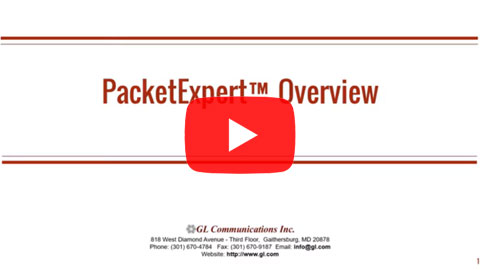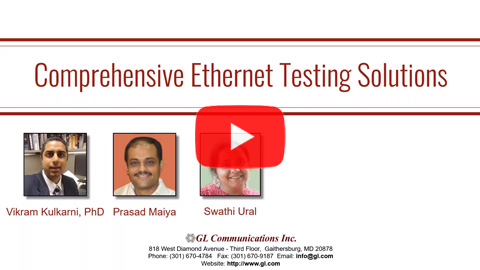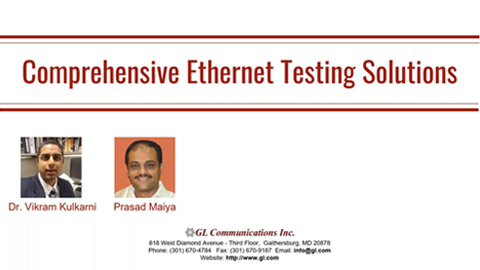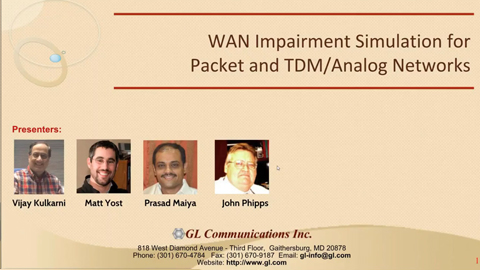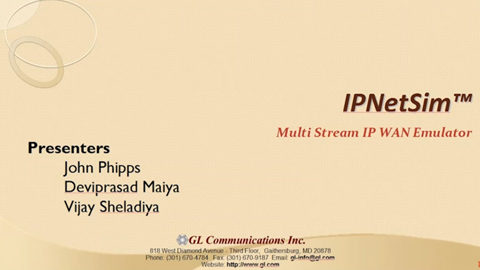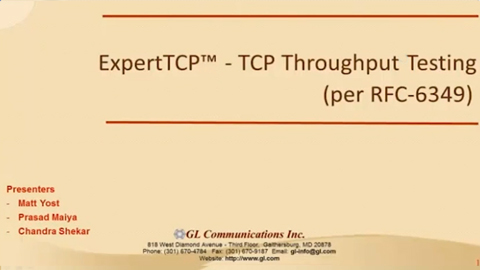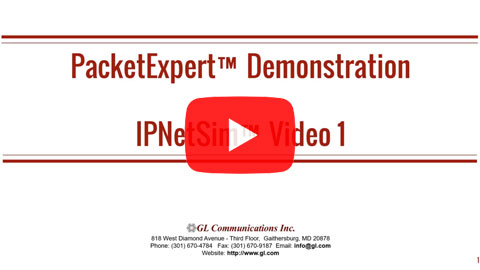PacketExpert™- Multi-Functional Ethernet/IP Test Solution
High-speed 10 Gbps Ethernet testing tool for network infrastructure.
Request a Demo / QuoteBrochure Platform Brochure
Overview
PacketExpert™ 10GX is a comprehensive Next-Generation 10G Ethernet/IP Tester supporting industry standard functionalities including wirespeed bit error rate testing (BERT), RFC 2544 / Y.1564 / RFC 6349 tests, packet capture, event-driven triggers and actions, traffic playback, impairment generation, stacked VLAN/MPLS tests, and many others.
The PacketExpert™ 10GX includes two 10/2.5/1 Gbps electrical/optical ports, and two 10/100/1000 Mbps electrical/optical capable ports. The 10/1 Gbps optical ports can be down-shifted to support 1 Gbps electrical ports, thus offering 4 electrical / 4 optical 1 Gbps ports for Ethernet testing.
GL has recently introduced the PacketExpert™ 100G Ethernet/IP tester enabling the testing of 100G networks. This solution provides comprehensive testing capabilities at blazing speeds of up to 100Gbps for wire-speed Ethernet/IP networks. The newly developed PacketExpert™ 100G ensures a seamless user experience with its user-friendly web interface. By accessing the hardware through any standard web browser, you can conveniently control and manage the equipment from multiple locations using a variety of devices such as personal computers, laptops, and tablets
Key Features
Detailed Features
- 10/100/1000 Mbps Electrical - 4 ports (2 RJ45 and 2 Copper SFP)
- 100 Mbps / 1 Gbps Optical - 4 ports (SFP)
- 2.5 Gbps Optical / Electrical - 2 ports (SFP)
- 10 Gbps Optical / Electrical - 2 ports (SFP+)
- Support for frame lengths from 64 bytes to Jumbo frames (up to 16000 bytes)
- Portable form factor - software runs on a PC/laptop connected to the hardware via USB
- Field testing form factor - software and hardware combined into a windows based box with WiFi support and Web based access. Access software from mobile or tablet connected via WiFi
- High-Density Rack-Mount Form Factor: Available in 1U and 2U rack-mount systems with up to 24 ports, an embedded Windows PC, and a dedicated LAN management port for streamlined hardware/software integration and operation.
- ITU-T Y.1564, in conjunction with remote Smart Loopback
- RFC 2544 - Throughput, Latency, Frame Loss, and Back-to-Back performance tests
- RFC 6349 based TCP Throughput Testing - test with multiple TCP streams
up to 1 Gbps rate - Emulate impairments such as congestion, latency, loss, jitter and packet reordering
- APIs provided in Python, and C# for easy automation and integration into tools such as Labview
- PacketBroker - Aggregated Ethernet network tap and filter. Can include 12 transistor-transistor logic (TTL) triggers based on user defined packet detection
- Multi stream traffic generation and analysis - send and receive multiple UDP streams and measure throughput, packet loss, delay, jitter and packet reordering at full wirespeed
- Non intrusive packet filter/capture at wirespeed - capture and store the traffic for later analysis in GL propreitary or Wireshark formats
- Smart Loopback - automatically swap MAC/IP Addresses or UDP Ports and loop back incoming traffic. Complements BERT, RFC 2544, Y.1564 and Multi stream UDP testing by acting as a remote responder
- Playback previously recorded traffic to emulate real world traffic. Hardware based playback ensures highly precise timing reproduction
- IPv4 and IPv6 compatibility
- Stacked VLAN (QinQ) - up to 3 stacked VLAN supported
- Stacked MPLS - up to 3 stacked MPLS support
Specifications
Stand alone Unit
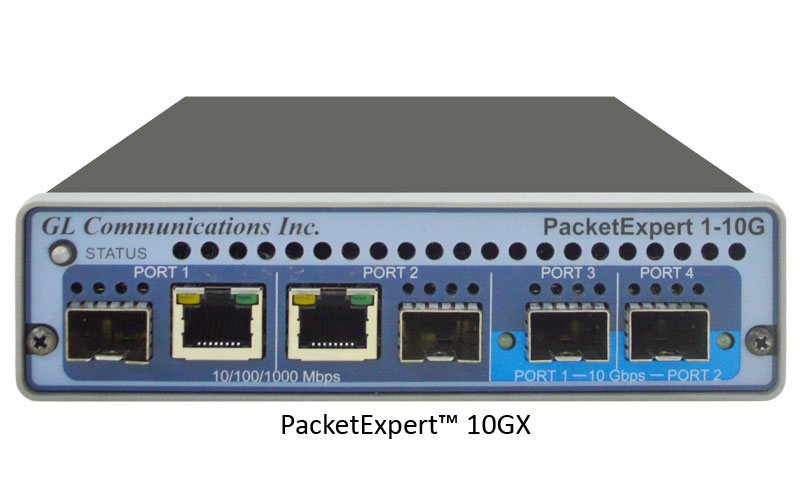
- Physical Specification
Length: 8.45 in. (214.63 mm)
Width: 5.55 in. (140.97 mm)
Height: 1.60 in (40.64 mm) - Weight: 1.713 lbs
- External Power Supply
+12 Volts (Medical Grade), 3 Amps
(For portable units having serial number ≥ 188400)
+9 Volts, 2 Amps
(For portable units having serial number < 188400) -
Temperature
Operating Temperature:
0° C to +50° C (only up to operating altitude of 5000 feet, and for Optical SFPs only i.e. Non Electrical SFPs)
+5° to +40° C (for operating altitude up to 10,000 feet, and for both Electrical and Optical SFPs)
Non-Operating Temperature: -30° to +60° C -
Humidity
Operating Humidity: 0% to 80% RH
Non-Operating Humidity: 0% to 95% RH -
Altitude
Operating Altitude: up to 10,000 feet
Non-Operating Altitude: up to 50,000 feet - Protocols
IEEE 802.3ae LAN PHY compliance
RFC 2544 compliance - Bus Interface - USB 3.0
Optional 4-Port SMA Jack Trigger Board
(TTL Input/Output)
mTOP™ Rack-mount System
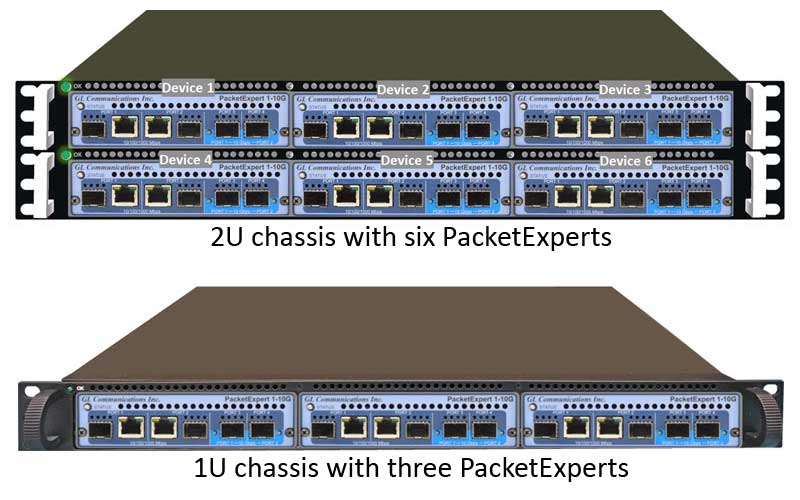
- Physical Specification
Length: 16 in (406.4)
Width: 19 in (482.6)
Height: 1U / 2U - Weight: (not including the rails)
1U with 3x PXN100 : 11 lbs
2U with 6x PXN100 : 22 lbs - Power Supply : ATX Power Supply
-
Temperature
Operating Temperature:
0° C to +50° C (only up to operating altitude of 5000 feet, and for Optical SFPs only i.e. Non Electrical SFPs)
+5° to +40° C (for operating altitude up to 10,000 feet, and for both Electrical and Optical SFPs)
Non-Operating Temperature: -30° to +60° C -
Humidity
Operating Humidity: 0% to 80% RH
Non-Operating Humidity: 0% to 95% RH -
Altitude
Operating Altitude: up to 10,000 feet
Non-Operating Altitude: up to 50,000 feet - Rack-mount Enclosures
1U mTOP™ (MT001 + 3x PXN100)
Rack-mount Enclosure can support up to 3 PXN100s
2U (6x PXN100)
Rack-mount Enclosure can support up to 6 PXN100s
Optional 4 to 12 Port SMA Jack Trigger Board
(TTL Input/Output) - Embedded PC Specifications
Intel Core i3, Windows® 11 Pro 64-bit OS
USB 3.0 and USB 2.0 Hub, ATX Power Supply
USB Type C ports, Ethernet 2.5GigE port
256GB Hard drive, 8G Memory
mTOP™ probe Unit
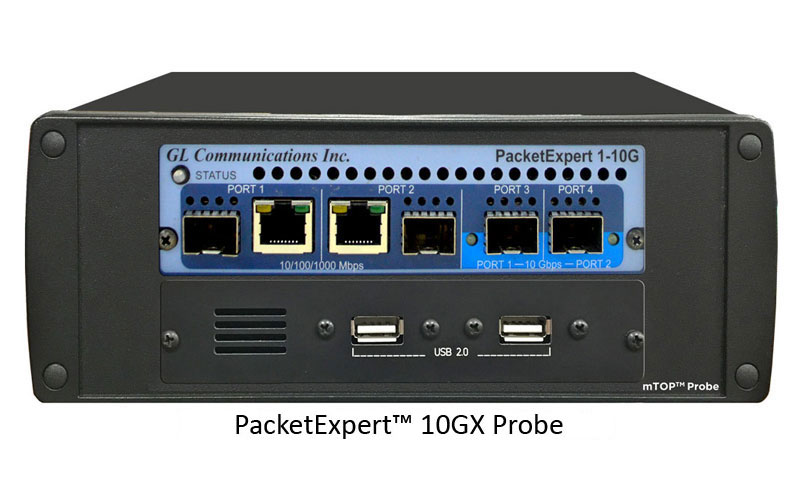
- Physical Specification
Length: 10.4 in. (264.16 mm)
Width: 8.4 in. (213.36 mm)
Height: 3.0 in. (76.2 mm)
Optional 4-Port SMA Jack Trigger Board
(TTL Input/Output)
External USB based Wi-Fi adaptor - External Power Supply: +12 Volts (Medical Grade), 3 Amps
-
Temperature
Operating Temperature:
0° C to +50° C (only up to operating altitude of 5000 feet, and for Optical SFPs only i.e. Non Electrical SFPs)
+5° to +40° C (for operating altitude up to 10,000 feet, and for both Electrical and Optical SFPs)
Non-Operating Temperature: -30° to +60° C -
Humidity
Operating Humidity: 0% to 80% RH
Non-Operating Humidity: 0% to 95% RH -
Altitude
Operating Altitude: up to 10,000 feet
Non-Operating Altitude: up to 50,000 feet - SBC Specifications
Intel Core i3 or optional i7 NUC Equivalent,
Windows® 11 64-bit Pro Operating System
USB 3.0 and USB 2.0 Ports, ATX Power Supply
USB Type C Ports, Ethernet 2.5GigE port
256 GB Hard drive, 8G Memory (Min)
Two HDMI ports
Ethernet Testers
PacketExpert™ 100G
- Both Port 1 and Port 2 supports Optical QSFP+ with 100Gbps/50Gbpg/40Gbps
- Provides options to downshift to 1Gbps/10Gbps/25Gbps rates using the SFP modules and adapters
PacketExpert™ 10GX
- 2x Optical 10 Gbps ports (10 Gbps BASE-SR, -LR -ER full-duplex SFP)
- 2x 100 Mbps Base-FX optical interface
- 2x 2.5 / 10 Gbps Electrical ports
- 4x Electrical 10/100/1000 Mbps ports (Base-T Electrical) OR 4x 1 Gbps Optical (Base-X Optical SFP)
- Includes 10 Gbps ports downshift to 1 Gbps
- In 10GX platform 1G mode, each port can be either Electrical or Optical
- Switch between electrical and optical
PacketExpert™ 1G
- All 4 ports can be electrical supporting 10/100/1000 Mbps Full Duplex mode
- 2 of the 4 ports can be optical supporting 1000 Mbps line rate Full Duplex mode
A complete comparison of all PacketExpert™ platforms is available
Ethernet Testers - Comparison
Buyer's Guide
| Item | Description |
|---|---|
| PXN100 | PacketExpert™ 10GX Accessories USB 3.0 cable (1) Power adapter
|
| PXN101 | 10G option for PXN100 |
| CXN100 | CLI Server for PXN100 |
| PXN104G | PacketExpert™ 10GX (4-Port)
Accessories Rack-mount System with SBC (1) Power Supply as per the international standards (1) Ethernet Cable (3\6\12) |
| PXN112G | PacketExpert™ 10GX – SA (12-Port) Accessories Rack-mount System with SBC (1) Power Supply as per the international standards (1) Ethernet Cable (3\6\12) |
| PXN124G | PacketExpert™ 10GX – SA (24-Port)
Accessories Rack-mount System with SBC (1) Power Supply as per the international standards (1) Ethernet Cable (3\6\12) |
| PXN105 | PacketExpert™ Wirespeed Record / Playback for PXN100 |
| PXN107 | PacketBroker™ - for PXN100 |
| PXN108 | Multi-Stream UDP/TCP Traffic Generator and Analyzer – for PXN100 |
| IPN507 | IPNetSim™ & IPLinkSim™ Options for 1G, 2.5G and 10G |
| Item | Description |
|---|---|
| PXE100 | PacketExpert™ 1G Accessories USB 2.0 cable (1) Power adapter 9 volts (1) Ethernet Cable (2) |
| CXE100 | CLI Server for PXE100 |
| PXE104G | PacketExpert™ - SA (4 ports) Accessories Rack-mount System with SBC (1) Power Supply as per the international standards (1) Ethernet Cable (3\6\12) |
| PXE112G | PacketExpert™ - SA (12 Ports) Accessories Rack-mount System with SBC (1) Power Supply as per the international standards (1) Ethernet Cable (3\6\12) |
| PXE124G | PacketExpert™ - SA (24 Ports) Accessories Rack-mount System with SBC (1) Power Supply as per the international standards (1) Ethernet Cable (3\6\12) |
| PXE105 | PacketExpert™ Wire speed Record /Playback for PXE100 |
| PXE107 | PacketBroker™ - for PXE100 |
| PXE108 | Multi-Stream UDP/TCP Traffic Generator and Analyzer - for PXE100 |
Resources
Note: PCs which include GL hardware/software require Intel or AMD processors for compliance.
| PacketExpert™ 10GX - Presentations |
|---|
|
PacketExpert™ 10GX - ExpertSAM PacketExpert™ 10GX - ExpertTCP PacketExpert™ 10GX - PacketBroker |
| PacketExpert™ 10GX - Sample Reports - PDF |
|---|
PacketExpert™ 10GX - BERT Report PacketExpert™ 10GX - 1G-Ports RFC 2544 Report PacketExpert™ 10GX - 10G-Ports RFC 2544 Report |
| All PacketExpert Platforms - PDF |
|---|
